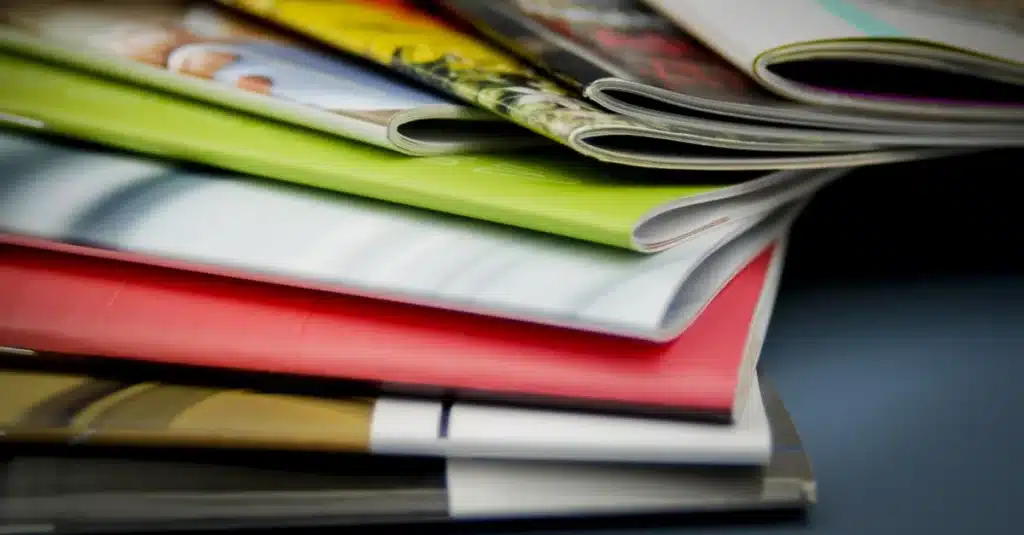The Unique Role of Booklets in Marketing
In an era saturated with digital messages competing for attention, print materials still offer a unique value for organizations seeking to make a lasting impression. A thoughtfully assembled print booklet engages in ways that go far beyond visuals—it draws readers into a tactile, immersive experience that complements and surpasses fleeting emails or social media touchpoints. Unlike a short-lived internet ad or a quick promotional post, a print booklet has a presence: it can be touched, browsed, left on a table, and referenced again and again. This physical engagement sets the stage for deeper understanding and increased message retention.
The lasting influence of print comes from how it encourages more deliberate interactions. According to the American Press Institute, printed materials continue to earn trust and credibility across all age groups, serving as an anchor in a world of rapidly shifting digital information. For marketers, choosing a print booklet isn’t just about tradition—it’s a strategic move to reinforce your reputation, deliver authoritative information, and consistently engage your audience over time. Booklets stand out for their storytelling power and ability to present complex information in a digestible, memorable format.
Understanding Booklet, Brochure, and Flyer Differences
To make the most of your marketing materials, it’s essential to understand the unique strengths of flyers, brochures, and booklets. Flyers are the simplest and quickest to produce: single sheets for fast announcements or quick distribution. Their design often focuses on a striking headline with a brief message or event promotion, making them ideal for situations where you need to get attention and a call to action across. Brochures add a bit more room for content and visuals with a bi-fold or tri-fold layout, and they are typically used to showcase services, highlight special offers, or sum up product lines.
Booklets rise above both by offering robust, multi-page bound content. They’re the format of choice when you must take your audience on a journey: guiding them from welcome and introduction through detailed explanations and stories, ending with clear calls to action. Booklets enable clever organization—sections, chapters, indexes, or appendices—and encourage designers to employ larger images, more comprehensive infographics, and consistent branding throughout. This extended space allows brands to breathe, communicate, and truly educate or inspire readers, making booklets indispensable when the story or message can’t be told in just a few lines.
Scenarios Where Booklets Shine
Booklets outperform print formats whenever the message requires in-depth coverage, multiple perspectives, or sustained interaction. Launching a new product line? Booklets allow for a dedicated page or spread for each item, alongside testimonials, use cases, and technical specs. Booklets organize complex information clearly and sequentially for educational purposes—such as course catalogs, onboarding guides, or employee handbooks. Booklets serve as detailed show guides, directories, or schedules at corporate events, trade shows, or conferences, ensuring attendees have a one-stop informational resource that can be referenced repeatedly.
Even for nonprofits, annual reports delivered as booklets blend impact stories, financial data, and donor recognition into a professional package. These documents are perceived as credible records, given more weight and attention than newsletters or digital dashboards. Booklets can also function as keepsakes—when the design, photography, and storytelling are strong, they’re saved and sometimes even displayed, spreading brand visibility far beyond initial distribution.
Design and Content Advantages of Booklets
The design and content flexibility booklets offer is unmatched in the print world. Page after page can be structured logically using tools like a table of contents, sidebars, chapter breaks, and infographics. Content can be tailored for different reader types, with key takeaways summarized alongside in-depth explorations. Visual storytelling is given space to shine, with high-quality photos, infographics, and branded elements woven throughout the booklet. The multi-page format also means information isn’t crammed, encouraging readers to read longer and remember more.
Professional recommendations—such as expert design tips—suggest maximizing white space, keeping navigation intuitive, and varying layouts so each spread feels fresh while maintaining overall brand cohesion. Thoughtfully designed booklets let the audience move at their own pace, diving deeper into sections of interest and revisiting topics as needed, which is seldom possible with flyers or brochures.
Longevity and Perceived Value
Booklets inherently carry more weight—physically and in terms of brand perception. Unlike brochures or flyers that are often thrown away or quickly forgotten, booklets are kept on desks, in bags, or at home, becoming reference pieces. This longevity means that the investment in booklet production pays off long-term: your message will be seen repeatedly, giving your brand a lasting presence. This extended use in sectors such as education, healthcare, or finance is crucial for informing, reassuring, and building trust with your audience.
The quality of a booklet, from the feel of the cover to the consistency of the visuals, further boosts perceived value. Recipients see a booklet as something with substance, increasing the likelihood they’ll recommend it, share it, or return to it for guidance, strengthening both your reach and reputation.
Distribution Strategies That Fit Booklets
Thoughtful distribution is essential for maximizing the power of booklets. Mailing booklets to targeted subscribers, distributing them at conferences, or placing them in waiting areas or retail counters ensure they are received by interested and engaged audiences. Booklets are especially effective in educational kits, investor packages, or subscription boxes, where recipients expect and value thorough information. Adding interactive elements, like QR codes or website URLs, helps merge the print experience with digital engagement, bridging the gap between information and action.
Their effectiveness multiplies when paired with great timing—such as product launches, enrollment periods, or seasonal events. Booklets become trusted guides and genuine value-adds for the recipient, reinforcing why they are a smart choice over shorter, disposable print pieces.
Best Practices for Deciding Between Booklets, Brochures, and Flyers
The best format always starts with your communication goal. Flyers work best to spread short, actionable information to broad audiences quickly. Brochures are useful for summarizing products, services, or event highlights when budget and space are limited. But if you need to share information that will be referenced over time, showcase authority, or take readers through a complete journey, booklets are a natural choice. Assess your audience’s needs, content volume, and brand reputation: a carefully designed and distributed booklet can communicate credibility and value far better than its shorter-form counterparts.
Your marketing will stay powerful by aligning your print strategy with your message and thoughtfully distributing your booklets to those most likely to value them. Booklets are reliable, effective, and memorable touchpoints in a media landscape flooded with transience.







